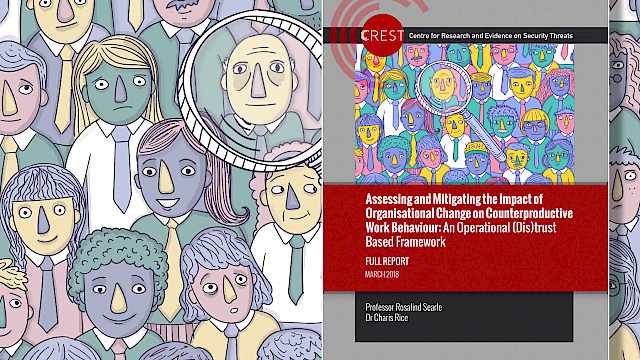Charis Rice
CREST Outputs
Projects
Articles
Academic Publications
The Enabling Role of Internal Organizational Communication in Insider Threat Activity – Evidence From a High Security Organization
This paper explores the role of internal communication in one under-researched form of organizational crisis, insider threat – threat to an organization, its people or resources, from those who have legitimate access. In this case study, we examine a high security organization, drawing from in-depth interviews with management and employees concerning the organizational context and a real-life incident of insider threat. We identify the importance of three communication flows (top-down, bottom-up, and lateral) in explaining, and in this case, enabling, insider threat. Derived from this analysis, we draw implications for communication and security scholars, as well as practitioners, concerning: the impact of unintentional communication, the consequences of selective silence and the divergence in levels of shared understanding of security among different groups within an organization.
(From the journal abstract)
Rice, C., & Searle, R. H. (2022). ‘The Enabling Role of Internal Organizational Communication in Insider Threat Activity – Evidence From a High Security Organization.’ Management Communication Quarterly.
https://doi.org/10.1177%2F08933189211062250
Projects
Articles
Academic Publications
The Enabling Role of Internal Organizational Communication in Insider Threat Activity – Evidence From a High Security Organization
This paper explores the role of internal communication in one under-researched form of organizational crisis, insider threat – threat to an organization, its people or resources, from those who have legitimate access. In this case study, we examine a high security organization, drawing from in-depth interviews with management and employees concerning the organizational context and a real-life incident of insider threat. We identify the importance of three communication flows (top-down, bottom-up, and lateral) in explaining, and in this case, enabling, insider threat. Derived from this analysis, we draw implications for communication and security scholars, as well as practitioners, concerning: the impact of unintentional communication, the consequences of selective silence and the divergence in levels of shared understanding of security among different groups within an organization.
(From the journal abstract)
Rice, C., & Searle, R. H. (2022). ‘The Enabling Role of Internal Organizational Communication in Insider Threat Activity – Evidence From a High Security Organization.’ Management Communication Quarterly.



















